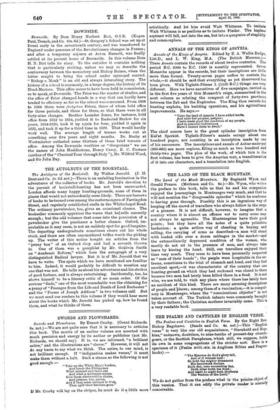DOWNSIDE.
Downside. By Dom Henry Norbert Birt, O.S.B. (Kegan Paul, Trench, and Co. 10s. 6d.)—St. Gregory's School was set up at Douai early in the seventeenth century, and was transferred to England under pressure of the Revolutionary changes in France ; and after a temporary sojourn at Acton Burnett, was finally settled at its present home of Downside. In this volume Dom H. N. Birt tells its story. To the outsider it contains nothing that is particularly striking, unless we may so describe the controversy between the monastery and Bishop Baines, when the latter sought to bring the school under episcopal control. " Bishop v. Monk " is an old and always interesting story. The history of a school is commonly, in a large degree, the history of its Head-Masters. This office seems to have been held in commission, so to speak, at Downside. The Prior was the master of studies, and the office of Prior changed hands in a way that can hardly have tended to efficiency as far as the school was concerned. From 1608 to 1S88 there were forty-two Priors, three of whom held office for three periods, and three for three, so that there were in all forty-nine changes. Brother Leander Jones, for instance, held office from 1612 to 1614, yielded it to Rudesind. Barlow for six years, 1614-1620, took it up again for four, yielded it again in 1625, and took it up for a third time in 1629. That would hardly work well. The average length of tenure works out at something over five years and eight months. Dr. Busby at Westminster outlasted some thirteen of these brief tenures of office. Among the Downside worthies or " Gregorians " we see the names of John Huddlestone, Henry Carey, E. C. Eustace (author of the "Classical Tour through Italy "), Mr. Wilfrid Ward, and Sir John Day.


























































 Previous page
Previous page